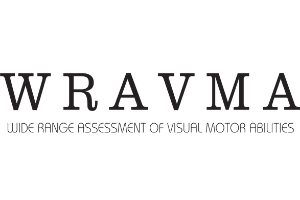Description
Wide Range Assessment of Visual Motor Abilities (WRAVMA) provides a reliable, accurate evaluation of visual-motor skills of children and adolescents.

Wide Range Assessment of Visual Motor Abilities (WRAVMA) provides a reliable, accurate evaluation of visual-motor skills of children and adolescents.
Wide Range Assessment of Visual Motor Abilities (WRAVMA) provides a reliable, accurate evaluation of visual-motor skills of children and adolescents.
Wayne Adams, PhD, David Sheslow, PhD
Overview:Evaluate visual-motor skills
Age Range:3 to 17 years
Administration:Individual
Completion Time:4-10 minutes per subtest
Publication Date:1995
Assess and compare visual spatial, fine motor skills, and integrated visual motor skills in children from 3-17 years using norms from a single sample.
The WRAVMA assesses three areas using three tests: the Drawing (Visual Motor) Test, the Matching (Visual-Spatial) Test, and the Pegboard (Fine Motor) Test. It provides a reliable, accurate evaluation of visual-motor skills of children and adolescents ages 3-17 years.
Co-operative or independent testing. Use each WRAVMA subtest individually or together:
A scaled score, standard score, an age-equivalent score, and percentile may be obtained for each subtest. A Visual-Motor Integration Composite score can be calculated when all three subtests are used together.
Relevant to school-related activities. Difficulties performing visual-motor tasks, such as copying, drawing, or handwriting, can be linked to a deficit of fine motor skills, spatial deficits, and/or an visual-motor integration deficit when motor and spatial systems are combined. The WRAVMA is uniquely suited to evaluate visual-motor ability because it makes meaningful distinctions between important contributing sub-areas.
Psychometrically sound. The norms for each test were derived from the same standardization sample of 2,600 children, permitting a valid comparison of a child’s overall visual-motor ability.
Comprehensive and economical. One set of materials can be used with children and adolescents ages 3-17 years.
Fast. Each subtest takes only 4-10 minutes to administer.
Normative data collected from 2,600 children on all three subtests. Reliability measures of the three subtests of the WRAVMA show internal consistency coefficients exceeding .90 and test-retest reliability coefficients ranging from .81 to .91. Construct validity is supported by item separations of .99.